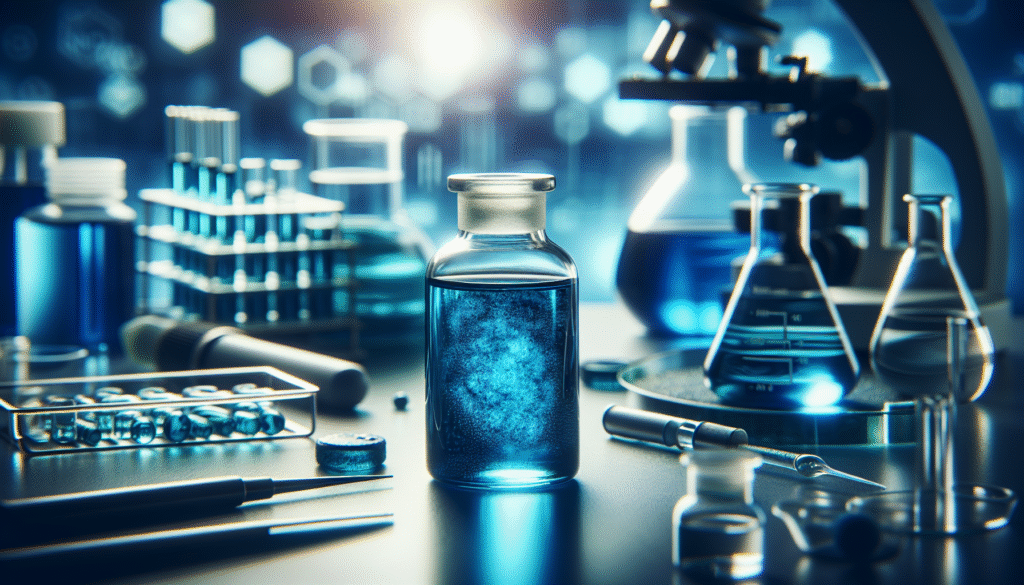
What is the significance of Methylene Blue in contemporary research practices?

Introduction to Methylene Blue
In the world of scientific research, certain compounds stand out for their versatility and range of applications. Methylene Blue is one such compound. Originally introduced as a dye in the late 19th century, it has since found its place in various fields, including microbiology, neuroscience, and psychiatry. Understanding how to utilize Methylene Blue effectively can enhance your research efforts significantly.
Chemical Properties of Methylene Blue
To appreciate the role of Methylene Blue in research, it’s crucial to understand its chemical properties. Methylene Blue is an organic compound with the formula C16H18ClN3S. It appears as a dark blue powder, and its solutions exhibit distinct properties that make it useful in various assays and studies.
Solubility and Stability
Methylene Blue is soluble in water and slightly soluble in alcohol. Its aqueous solution is stable under neutral pH but can degrade under extreme conditions such as high temperatures or acidic environments. Understanding these properties is essential when planning your experiments.
Absorption and Fluorescence
One of the standout features of Methylene Blue is its strong absorbance in the visible spectrum, particularly around 664 nm. This characteristic allows for easy detection and quantification in biological assays. Additionally, its fluorescence can be leveraged in imaging studies, making it a valuable tool in both live and fixed tissue analysis.
Historical Context
The journey of Methylene Blue from a simple dye to a multifaceted research tool is a fascinating one. Its initial use dates back to the late 1800s when it was employed to stain tissue samples. However, the compound’s potential was soon recognized in various scientific domains, leading to its application in more advanced research.
Evolution of Applications
Over the years, researchers have discovered numerous applications for Methylene Blue—from its use as a redox indicator to its role in studying cellular respiration, neurobiology, and even as a potential therapeutic agent in treating specific conditions such as methemoglobinemia and Alzheimer’s disease.
Applications in Microbiology
Methylene Blue’s utility in microbiology is well-documented and varied. It can facilitate the staining of cells, microbial analysis, and even antibiotic susceptibility testing. Its applications can be categorized as follows:
Staining Methodologies
Methylene Blue is often used as a vital stain to differentiate between living and dead cells. Living cells will take up the dye, whereas dead cells will appear as uncolored, allowing you to assess viability effectively.
| Application | Description |
|---|---|
| Vital Stains | Indicate live versus dead cells |
| Gram Staining | Differentiate bacterial types |
| Culture Studies | Assists in observing microbial growth patterns |
Antibiotic Susceptibility Testing
Methylene Blue can also serve as a marker in antibiotic susceptibility testing. In this context, it helps identify whether bacteria can survive in the presence of specific antibiotics, providing insights that are critical for treatment decisions.

Applications in Neuroscience
Methylene Blue has offered insights into neurobiology that benefit various studies related to the brain and nervous system. Researchers have explored its potential impacts on cognitive function, mitochondrial activity, and neuroprotection.
Cognitive Enhancement
Studies suggest that Methylene Blue may enhance cognitive functions, particularly in conditions where mitochondrial energy production is compromised. This capability has led to increased interest in using it as a therapeutic agent in neurodegenerative diseases.
| Condition | Effect Observed |
|---|---|
| Alzheimer’s Disease | Potential to reduce tau aggregation |
| Parkinson’s Disease | May enhance mitochondrial function |
| Traumatic Brain Injury | May improve outcomes in recovery |
Neuroprotection
Methylene Blue’s antioxidant properties enable it to protect neurons from damage caused by oxidative stress. This neuroprotective effect can be critical in studies focusing on aging and degeneration of neural tissues.
Applications in Psychiatry
The therapeutic applications of Methylene Blue in psychiatry are garnering increased attention. Its influence on neurotransmitter systems makes it a candidate for treating mood disorders and psychotic conditions.
Mood Disorders
Research has shown the potential for Methylene Blue to impact serotonin levels and mitigate symptoms of depression. While further studies are needed for conclusive evidence, initial findings have opened new avenues for treatment.
| Disorder | Observed Effect |
|---|---|
| Major Depressive Disorder | May improve symptoms in resistant cases |
| Bipolar Disorder | Potential mood stabilization effects |
Antipsychotic Properties
In addition to its mood-regulating potential, Methylene Blue has demonstrated the ability to modulate dopaminergic pathways. This quality could offer insights into developing new antipsychotic treatments, though comprehensive research is still required in this area.
Considerations for Laboratory Use
If you are considering working with Methylene Blue in your research, understanding safety precautions and experimental design is pivotal for achieving reliable results.
Safety Precautions
Methylene Blue is generally regarded as safe, but it is crucial to adhere to standard safety protocols:
- Wear gloves and eye protection to avoid contact with skin and eyes.
- Utilize fume hoods where necessary to mitigate inhalation risks.
- Dispose of waste according to local regulations and protocols.
Experimental Design
When employing Methylene Blue in your experiments, consider the following elements of experimental design:
- Control Groups: Always include control groups to differentiate between the specific and non-specific effects of the dye.
- Concentration Levels: Utilize varying concentrations of Methylene Blue to identify effective doses for your particular application.
- Time Points: Assess outcomes at multiple time points to understand the kinetic behavior of the compound.
Analytical Techniques for Methylene Blue
Various analytical methods can facilitate the measurement and characterization of Methylene Blue in samples. Familiarity with these techniques can enhance the robustness of your research findings.
Spectrophotometry
This method employs the absorbance of Methylene Blue at its characteristic wavelength to quantify its concentration in a solution. Spectrophotometry is a reliable approach for routine analysis.
Fluorescence Microscopy
For imaging applications, fluorescence microscopy can reveal the distribution of Methylene Blue within biological samples. This technique can provide spatial resolution, enhancing your studies of cellular processes.
| Technique | Application |
|---|---|
| Spectrophotometry | Quantification of Methylene Blue concentration |
| Fluorescence Microscopy | Imaging of cellular uptake and localization |
Limitations of Methylene Blue
Despite its numerous advantages, it is essential to recognize the limitations associated with the use of Methylene Blue in research.
Stability Issues
Though Methylene Blue is relatively stable, it can degrade under certain conditions, affecting the results of experiments that rely on its presence. Careful control of experimental conditions can mitigate this risk.
Variability in Results
Different cell types and experimental settings may yield varying effects of Methylene Blue. This variability necessitates stringent control measures and thorough documentation of experimental conditions.
Future Directions in Methylene Blue Research
As new discoveries arise in molecular biology and pharmacology, the potential for Methylene Blue’s application continues to expand. Future research may focus on novel delivery methods, optimized formulations, and combined therapeutic approaches.
Combination Therapy
The combination of Methylene Blue with other therapeutic agents could enhance its efficacy in treating complex conditions such as neurodegenerative diseases or mood disorders. These strategies warrant further exploration in clinical trials.
Novel Applications
Researchers are constantly seeking new applications for Methylene Blue. The pursuit of understanding its role in mitochondrial function, metabolism, and signal transduction pathways could yield groundbreaking insights into cellular behavior.
Conclusion
Through its rich history and diverse applications, Methylene Blue remains a vital compound in scientific research. Whether you are exploring its potential in microbiology, neuroscience, or psychiatry, a comprehensive understanding of its properties, benefits, and limitations will enable you to conduct meaningful experiments. By remaining aware of safety, design considerations, and analytical techniques, you can leverage Methylene Blue to contribute to advancements in your field. The journey of Methylene Blue continues, and as research unfolds, its potential to impact human health and disease may only just be beginning. Now, with the knowledge of its complexities and applications, you are equipped to harness the capabilities of Methylene Blue in your own research endeavors.